If you’re an indie publisher competing against big-pocketed media outlets, you’ve got to be smarter than the pack and automate what can be automated, to focus on the highest value added tasks. The question is: what can be automated in content creation today?
Can content ideation be automated?
Let’s be clear from the start to avoid disappointment: the roadblock will always be the very last mile of your workflow, i.e. writing the actual content, but there are now plenty of advanced tools at your disposal to facilitate if not fully automate content research and ease the production phase.
At the ideation stage, start with the most basic question: what are people looking for?
Google Autocomplete is your best friend in the earliest stages of your research.
Let’s type for instance: “What can you automate…”
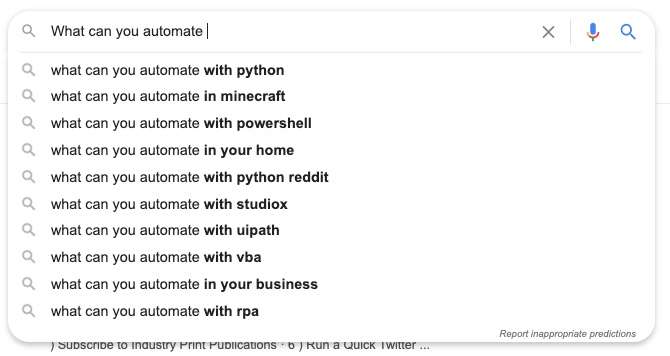
Google gives you 10 suggestions (ranked from most to least popular).
I won’t elaborate on Python today but we’ll come back to this.
In this piece, we’ll discuss some no-code tools which can help you automate your repetitive workflows.
How can a keyword tool help you automate your content research?
If you want to dig deeper than Google’s automated suggestions, have more options before picking a topic and diving into creation mode, you’ll have to invest in a keyword tool (c. $99 per month).
There are plenty of players on the market. The 2 main ones are SEMrush and Ahrefs. My personal preference goes to Ahrefs. But if you want to test a cheaper solution with decent results (at least for the main geos), you should consider Serpstat (their Lite plan, priced $55 per month on an annual basis, includes programmatic access to their API).
Let’s imagine you’re passionate about tools and consider starting a blog about cordless drills.
You can open Ahrefs Keywords Explorer, type “cordless drills” and get valuable insights about the search volume and the keyword difficulty (here for Google USA).
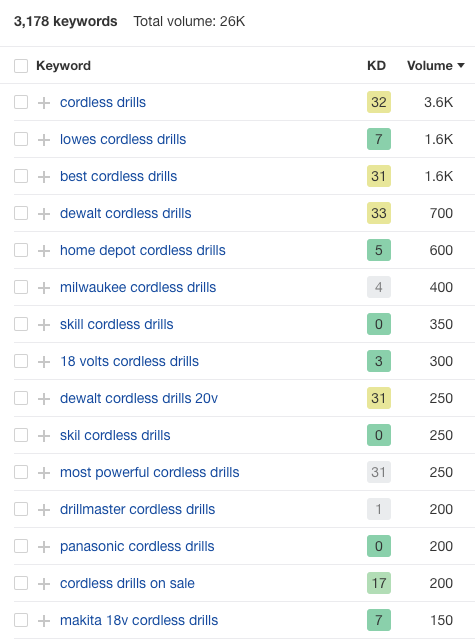
The side bar gives you a summary view per parent topic.

You can immediately spot a few opportunities among the most popular brands (DeWait, Skills,…).
If you switch to the Questions tab in the main side bar, you’ll get a few questions related to the search query.
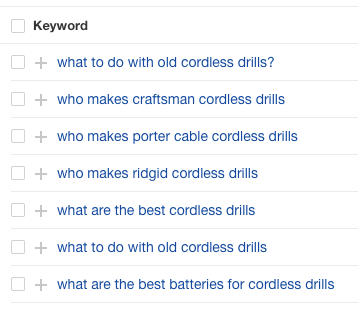
In this specific case, it shows you that people have questions about the manufacturers of some cordless drills brands, as well as about batteries. This could be the topic of two dedicated posts (“who’s making xyz brands” and “what are the best batteries for xyz models”).
Don’t pay too much attention to the search volume displayed along the keywords and questions. Based on my experience, they’re usually under-estimated.
Creating a content brief with Frase.io
If you want to get a broader snapshot of topic opportunities, I invite you to check out Frase.io. They offer a very powerful SEO research tool, which can generate a content brief in a few minutes.
Let’s start by creating what Frase calls a “document”, with the keyword / topic we’re researching: “cordless drills”.
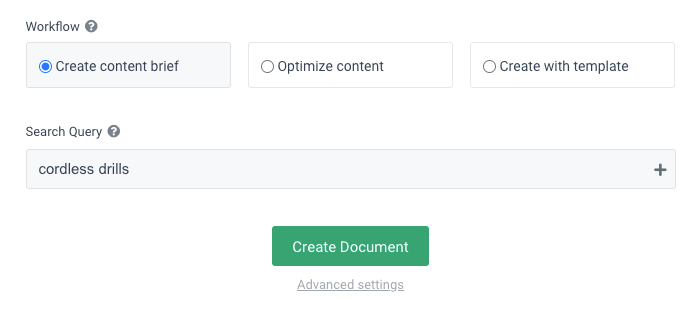
Frase.io will explore Google SERP and retrieve information from all the results it’s scraping. For instance in the Overview tab you’ll get a list of topic suggestions. You can paste them into the left column to populate your content brief.

You can also explore the Summaries tab and paste relevant data into your content brief, which will be starting points for your own text.
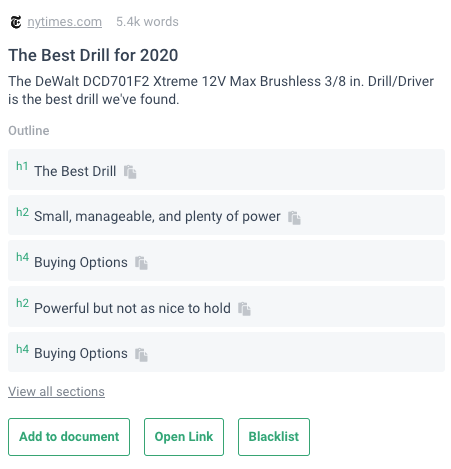
Let’s be clear, Frase doesn’t fully automate content research but it helps you skip a few steps. You don’t have to open all SERPs one by one to get a glimpse into each piece. Frase gives you a quick overview of each relevant article. Then you can explore the ones which have attracted your attention. For complex topics, it can save you hours of back & forth clicking in Google.
If you want to optimise an existing piece on your blog, Frase will compare its topical density with the most popular results, which is a great indication of the efforts you’ll have to make to bridge the gap.
There’s currently a Black Friday Deal on Appsumo for Frase.io, click here for more info.
Note: BuzzSumo is also a nice place to start for content inspiration (even if ahrefs also offers what they call the “Content Explorer” with very similar features).
How can you accelerate content research with a scraper?
Scrapers can also be a nice way to kickstart content research and save you hours of grinding.
Let’s imagine for instance that you want to find the invention date of a few technological devices to document one of your pieces. Simply open Google Sheets (or Excel or Open Office,…), populate the first column with the list of devices. In the second column, type and drag the start of a Google Search query https://www.google.com/search?q= and in the third column, use a formula to concatenate columns B and A while adding some text around it to complete the search query.
=CONCATENATE(B1,"When was the ",A1," invented?")

Then paste the results in the third column data into a scraper.
Scrapestorm is, in my opinion, the best affordable tool at the moment (premium plans start at $49 per month for 10,000-line exports per day, which is more than enough for this type of work).
Scrapestorm will initiate the search process for the first query in your list, which will serve as a template for the next ones. You simply have to pick the elements you need in the results. The cool thing about Google is that it answers A LOT of questions via well-structured featured snippets, super easy to scrape & parse.
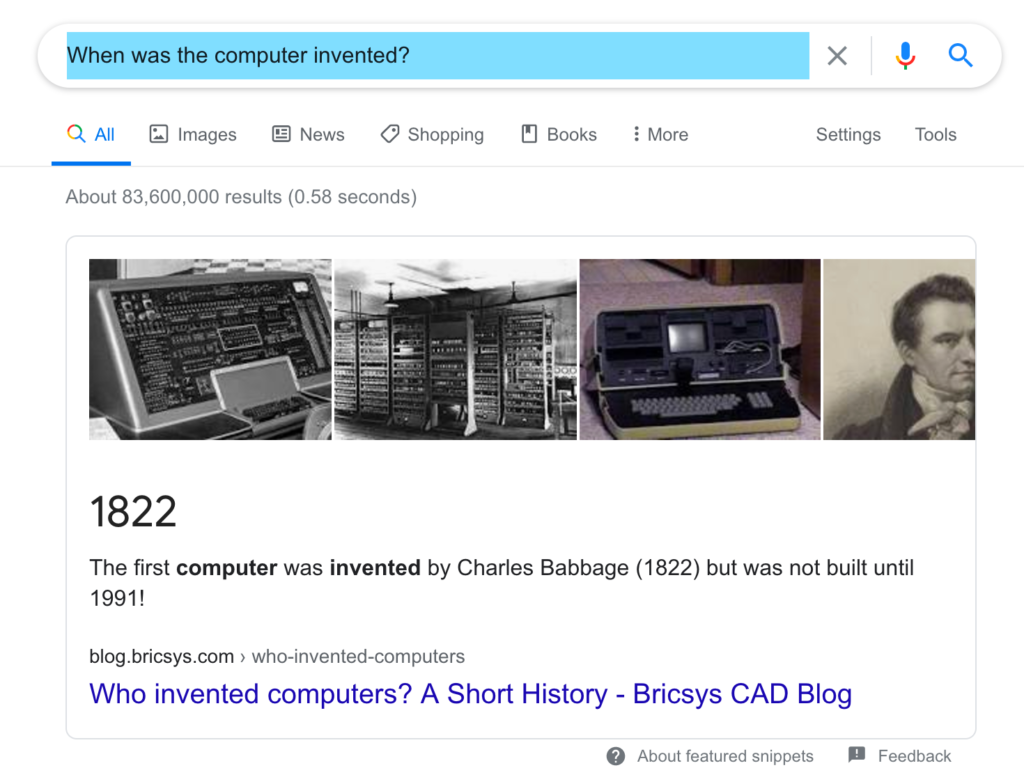
In less than one minute, you’ll have correct answers for most queries. You simply have to fill the gaps with manual old-school research. Pretty cool, isn’t it? In this example, we had 2 missing dates out of 14 queries. The list could have been much longer (you can import a CSV into Scrapestorm for lists above 200 entries).

You can imagine all sorts of scraping / parsing scenarios to speed up your workflows.
The ultimate affordable no-code tool to automate repetitive tasks: Make / Integromat
If you want to experience the magic of no-code automation, you have to test both Zapier and Integromat.
They enable you to create all sorts of automation rules between leading SaaS products both via native integrations and the power of APIs. My current preference goes to Integromat, more versatile and less expensive than Zapier (premium plans start at $9 per month for unlimited scenarios and a good amount of operations).
For a recent project I needed to translate a word and a description into 10 languages. I subscribed to DeepL API (EUR 4.99 per month for access + pay-as-you-go based on the amount of translated characters) and created a long scenario in integromat, connected to both Google Sheet and DeepL. It reliably translated hundreds of lines of words & descriptions on its own in less than 30′!

I have another scenario which connects Google Sheets to Youtube Search API and Spotify Search API to retrieve movie trailers and movie soundtracks.
I also designed a few scenarios which can create custom WordPress posts based on images stored in a Dropbox folder, using the name of the images as the titles of the posts.
I also programmed a scenario watching new WordPress posts to forward them to Socialpilot which can then distribute the posts on social media, in autopilot.
The key both for properly using a scraper like Scrapestorm and an automation tool like Integromat is to have well structured seeding data in the first column of your spreadsheet AND a clear view of what you want to accomplish.
Leverage Google Sheets formulas to automate your processes
Automation can be a mix between using Integromat and leveraging scripts OR formulas inside of Google Sheets (you can also prepare your content in Notion or use Airtable).
For instance you might have to add a hyphen between words to prepare the structure of image locations in your WordPress media library. You know the path to your images, it’s always the same (changes every month), and the file extension but you need to correctly set the name, hence the need for the hyphens. There’s a way to automate it in Google Sheets.
Let’s assume that your words are in column A, line 2. This formula will replace the space by a hyphen.
=SUBSTITUTE(A2," ","-")Then in the next column you can concatenate the result (B2) with the correct path in your library, adding the file extension, for instance:
=CONCATENATE("https://mydomain.com/wp-content/uploads/2020/12/",B2,".jpg")
Of course this assumes that your image will have the correct name when uploaded to your media library.
The lines in your spreadsheet will serve as an upload location reference. Which you can then import into WordPress when you create your final posts, either via Integromat (connected to the WordPress Rest API) or via WP All Import.
You can easily imagine how much this accelerates the creation of repetitive posts based on structured data.
Can you automate copywriting?
Honestly, in some cases, I wish I could. It’s so boring to write a long series of product descriptions (or product reviews when creating an affiliate site).
There are enterprise-level solutions ($$$) like Syllabs or AX-Semantics to craft product descriptions based on structured data and a semantic brief but they only serve very specific / narrow use cases (real estate, technical products, sport / election results,…). They won’t venture into emotional / poetic copywriting (and it’s not their purpose).
OpenAI recently released the latest iteration of their Generative Pre-Trained Transformer, GPT-3 which can generate free form copy but it doesn’t “know” what it’s doing – we’re far from AI consciousness – so it can’t really create meaningful narrative progressions. Humans still need to do the hard work to come up with compelling copy.

You can of course leverage writing assistants like Grammarly, Hemingway, Ludwig or Quillbot (paraphraser) to improve your writing but these tools won’t create the full piece from scratch. They come in pretty handy, though. I would strongly advise you to give them a try.
For basic patterns, there’s also the spintax route (variations mainly based on synonyms) but it has to be carefully programmed and used sparingly, otherwise your text will feel very robotic.
By the way, there’s a spintax script (and its formula) for Google Sheets.
How to use spintax in Google Sheets?
Here’s the script you have to paste into Google Sheets (via Tools > Script Editor).
function run_spintax(text_to_spin) {
var text = text_to_spin;
var matches, options, random;
var regEx = new RegExp(/{([^{}]+?)}/);
while((matches = regEx.exec(text)) !== null) {
options = matches[1].split("|");
random = Math.floor(Math.random() * options.length);
text = text.replace(matches[0], options[random]);
}
return text;
//console.log(text);
}
And here’s the formula to use in your spintax cells (where “variations” are options you want to spin). Variations have to be separated by vertical bars and the full sequence of options has to be surrounded by curly braces. Pro tip: you can create variations in separate columns, concatenate them into a cell and spin the content of the cell (using a cell reference in the parenthesis), it’s much easier than setting the variations inside a long formula.
=run_spintax("{variation1|variation2}")Example of formula spinning the content of a cell resulting from a concatenation.
=run_spintax($N2)Conclusion: what can we automate today in content creation?
Here’s what you can partly automate leveraging today’s technology.
- content research at the ideation stage, using SEO tools like Ahrefs and Frase
- repetitive content research / creation using Scrapestorm and Integromat + Google Sheets
- AI-assisted content creation with Syllabs, AX-Semantics (+ experimenting with GPT-3), for specific structured use cases
- writing assistance with Grammarly / Ludwig / Quill,… + generating basic spun variations inside of Google Sheets (the result can be published via Make / Integromat)
To be continued…
What are you using today to accelerate your content creation workflow?


 Subscribe to my weekly newsletter packed with tips & tricks around AI, SEO, coding and smart automations
Subscribe to my weekly newsletter packed with tips & tricks around AI, SEO, coding and smart automations







